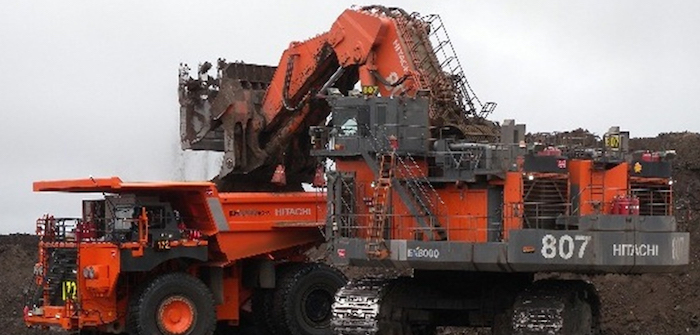The engineering department at Hitachi Construction Truck Manufacturing is taking steps to improve its rigid-frame hauling truck design through improving its analysis tools
The company has a history of using spreadsheet programs and older coding languages as a means to solve some engineering problems. While sometimes sufficient, these legacy approaches to managing intellectual company property can end up introducing redundancies and slowdowns in a variety of ways during a design process. The engineering department at Hitachi Construction Truck Manufacturing (HTM) decided to gradually implement the use of Maple in several key areas to help speed development, and reduce the risk of errors from manually handling calculations across many tools.
During typical analysis tasks, engineers at HTM use specific mathematics to work through design concepts, and model their kinematic behavior and analyze their structural integrity over time. In the truck’s initial design stage, HTM has historically used some in-house developed spreadsheet programs, but has recently moved to Maple to reduce the chance of errors and improve calculation efficiency. In addition, Maple has been adopted to optimize design parameters throughout the truck design process.
“Using Maple can make calculations more efficient than using spreadsheets,” noted Dr Shen, a senior manager in the technical analysis group. Using Maple, HTM engineers can set up their analysis with an intuitive math input, and use built-in functions to automatically solve and simplify work, reducing many of the possible errors they had associated with traditional, manual effort.
The rigid frames developed at HTM must support massive payloads ranging up to almost 300 tonnes. To make sure these frames are suitable for the job, HTM uses FEA to investigate the life of welded joints, helping to determine the required size of each weld. While FEA is a powerful tool, it can be very resource-intensive, slowing down critical aspects of design analysis. Using Maple, HTM engineers perform initial stress estimations that give them a much better sense of their design before spending large amounts of time doing FEA iterations. With a better starting point, the FEA work is already honed in on rough approximations, so it can arrive at accurate solutions much quicker.
In addition to improving the analysis capabilities of HTM, engineers are also beginning to integrate Maple into the reports they must regularly create for records. In the past, these reports would be an entirely different task, and any necessary mathematics would be inserted as screenshots, creating a break between the actual analysis and the report itself.
With Maple, the documentation interface offers all of the features necessary for professional reports, and the mathematics involved are live, allowing updates to be reflected immediately across the entire document.
Although still in the beginning phases, HTM engineers can now use Maple as a means to easily create reports from their pre-existing analysis work. As time goes on, this will allow engineers to create a live connection between their analysis work and their reporting, ensuring that future changes are reflected across all the relevant documents at hand.
The migration from old techniques still continues, but HTM engineers are already seeing the benefits of adopting Maple for a variety of tasks that were once performed in older general-purpose tools.
Transitioning from traditional tools like Excel to Maple helped Hitachi streamline its calculation management process and reduce the risk of errors
November 9, 2017


